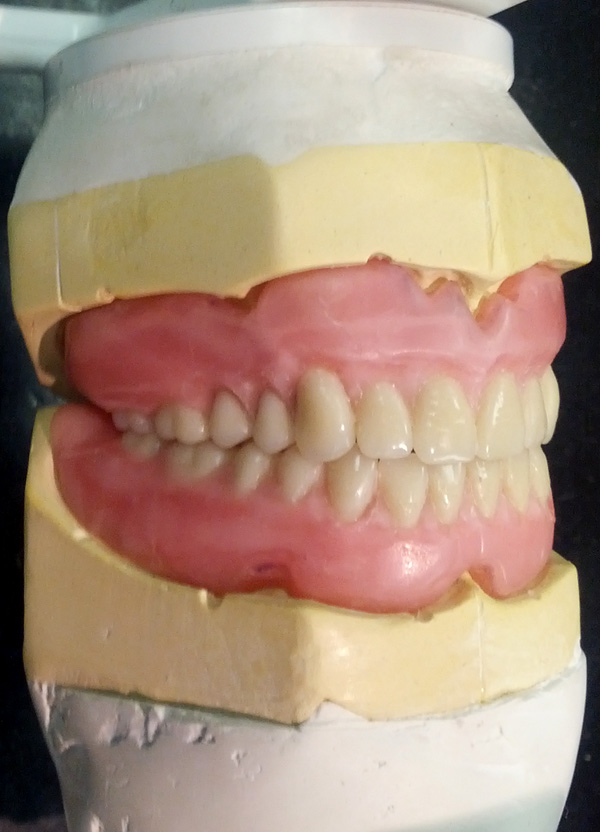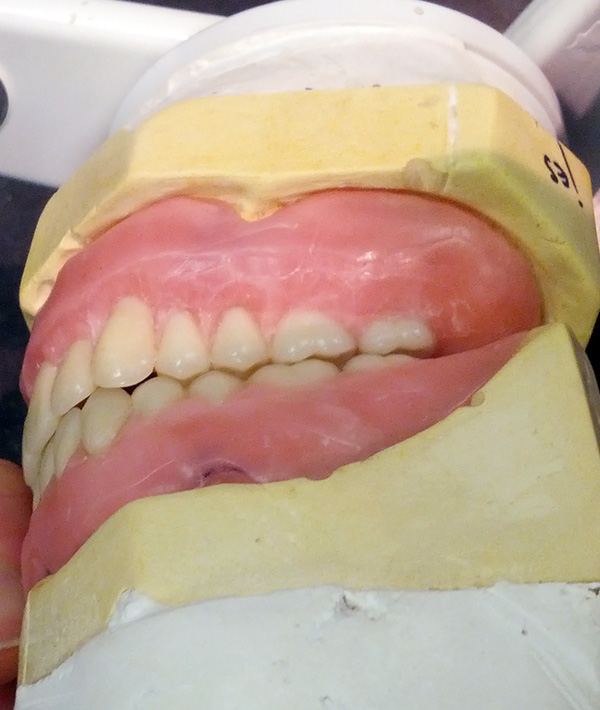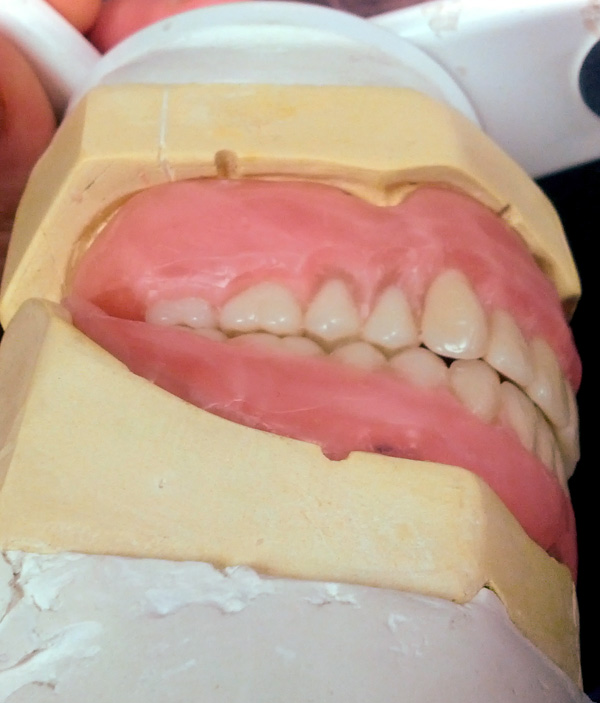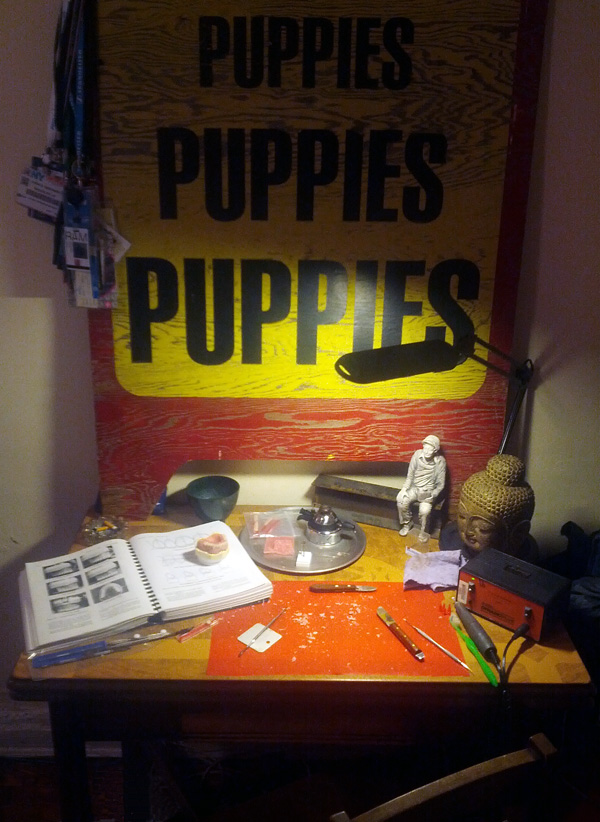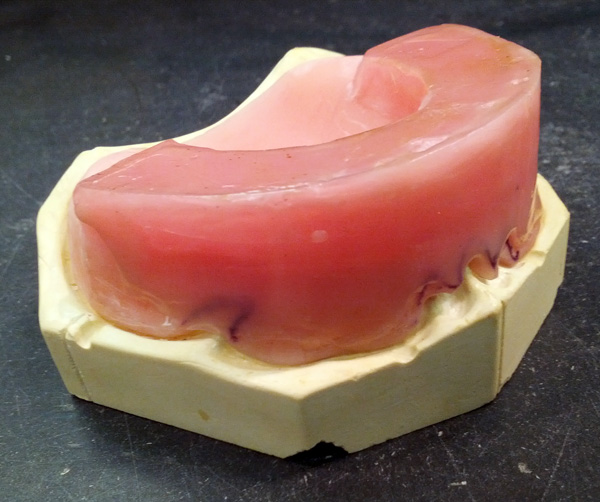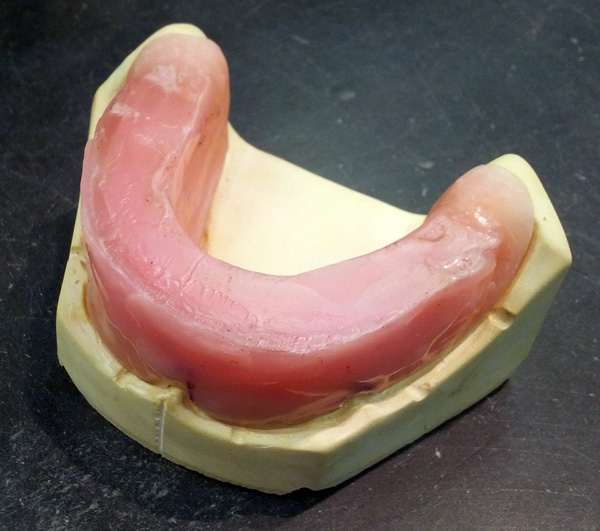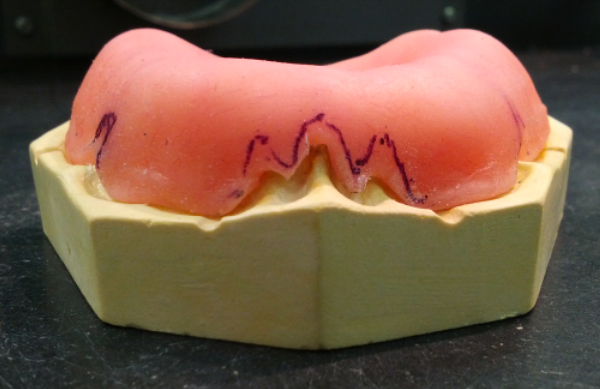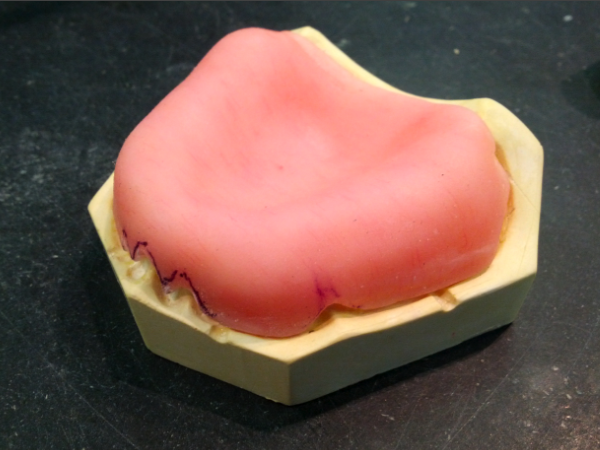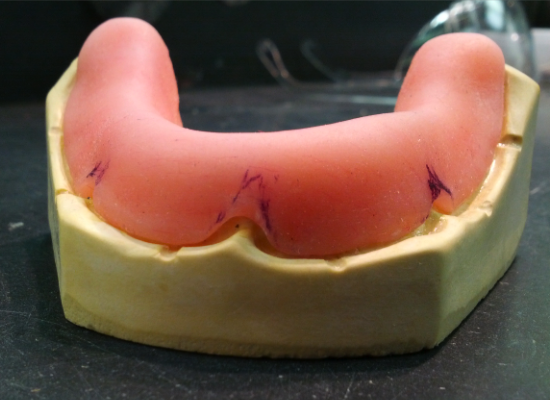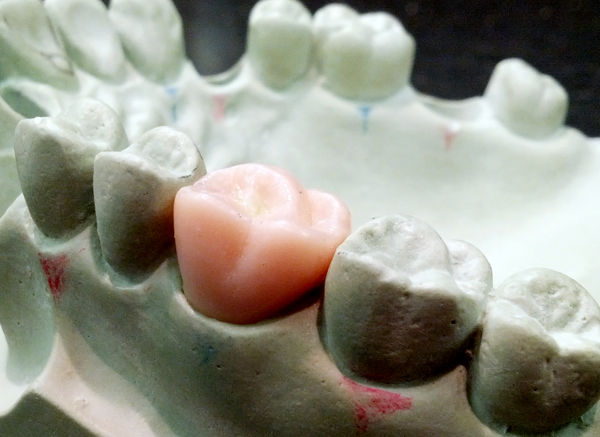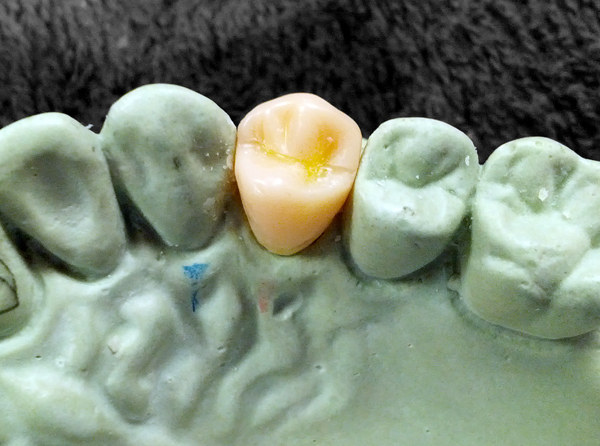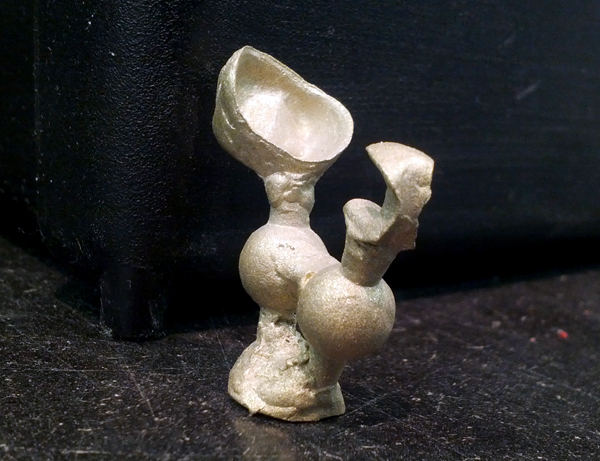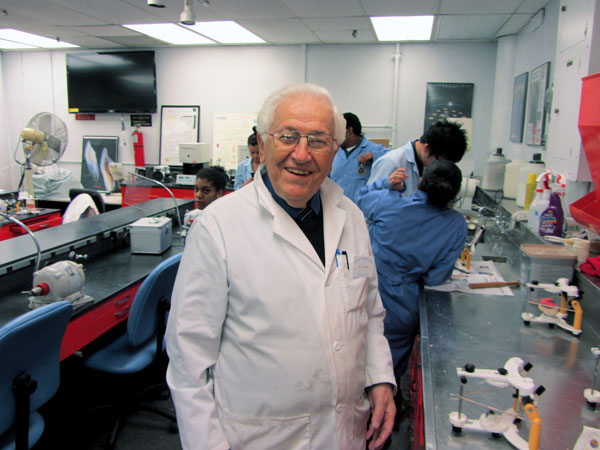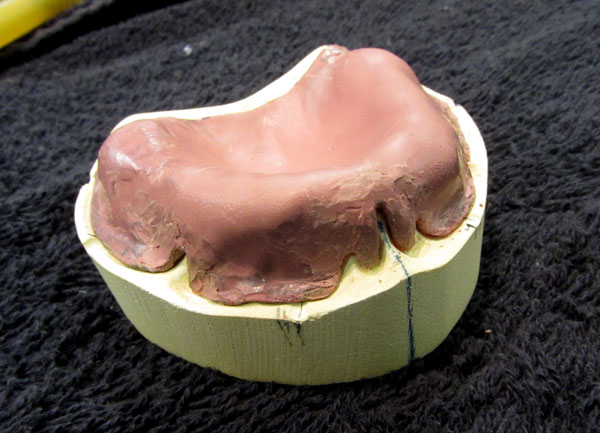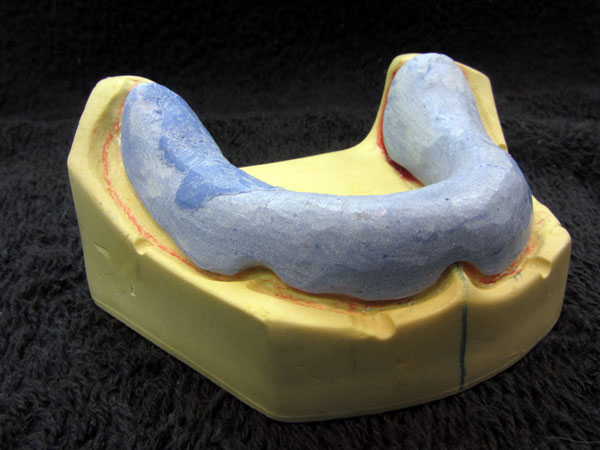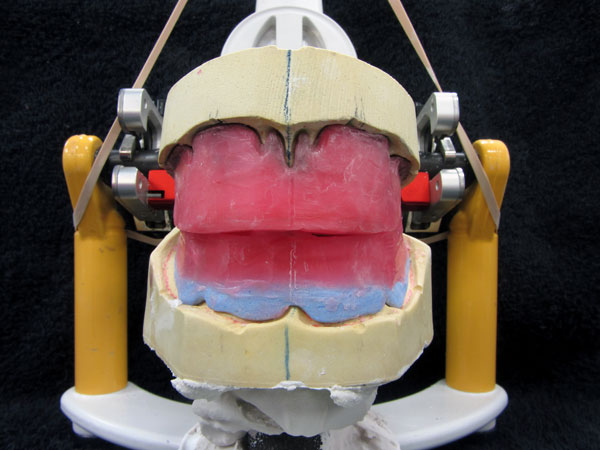After all is said and done (and all is a lot), I feel 100% better going into Complete Dentures II with my second try-in denture. Starting over from scratch and redoing an entire semester of labwork independently in two weeks proved to be a major undertaking, and I encountered a few roadblocks along the way. It took me four complete set-ups, a considerable amount of guidance from David, and two helpful evaluations from Professor Sena to get my teeth in order.
(A few nights at the kitchen table in front of my butane Bunson burner until dawn didn’t hurt, either.)
The results are far from perfect, but I am pleased. My goal was to complete everything from start to finish in time to enter my second semester with a significantly improved, festooned try-in denture… I accomplished all but the festooning. I will no doubt have some occlusal tweeking to do, but I’m sure everyone in my class will find themselves in that position.
What matters: I have gained a higher level of competence and comfort with the process of constructing a try-in denture from the experience. I can confidently say that I am in far better shape starting Complete Dentures II with my present try-in denture – unfestooned and all – than I would have been with what I had at the close of Complete Dentures I.
Thank you David and Professor Sena, for your help, your time, and your support.



